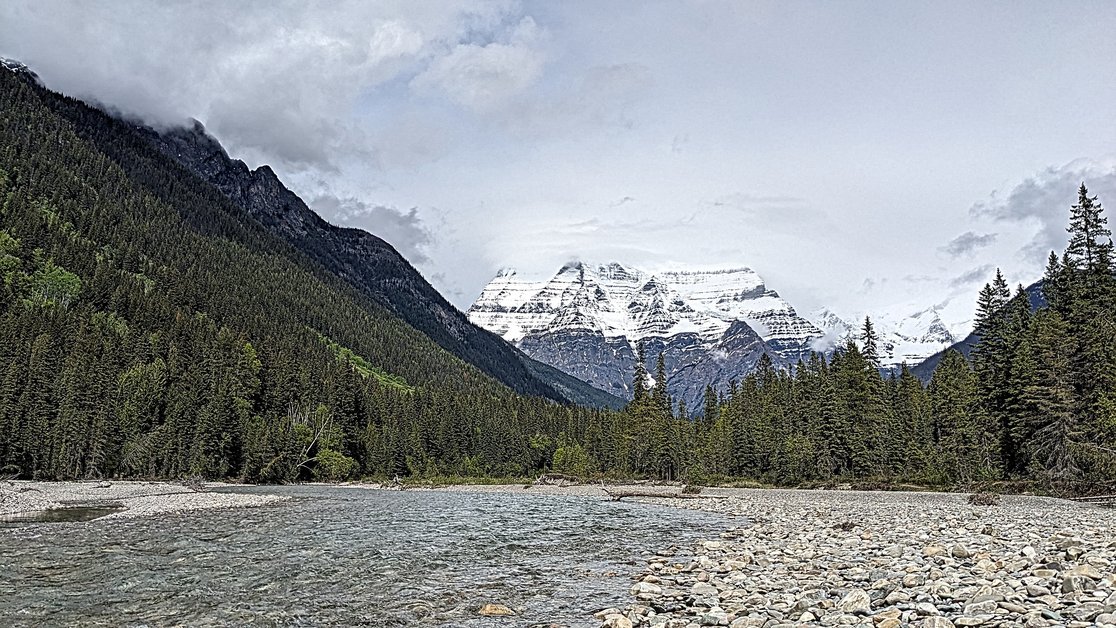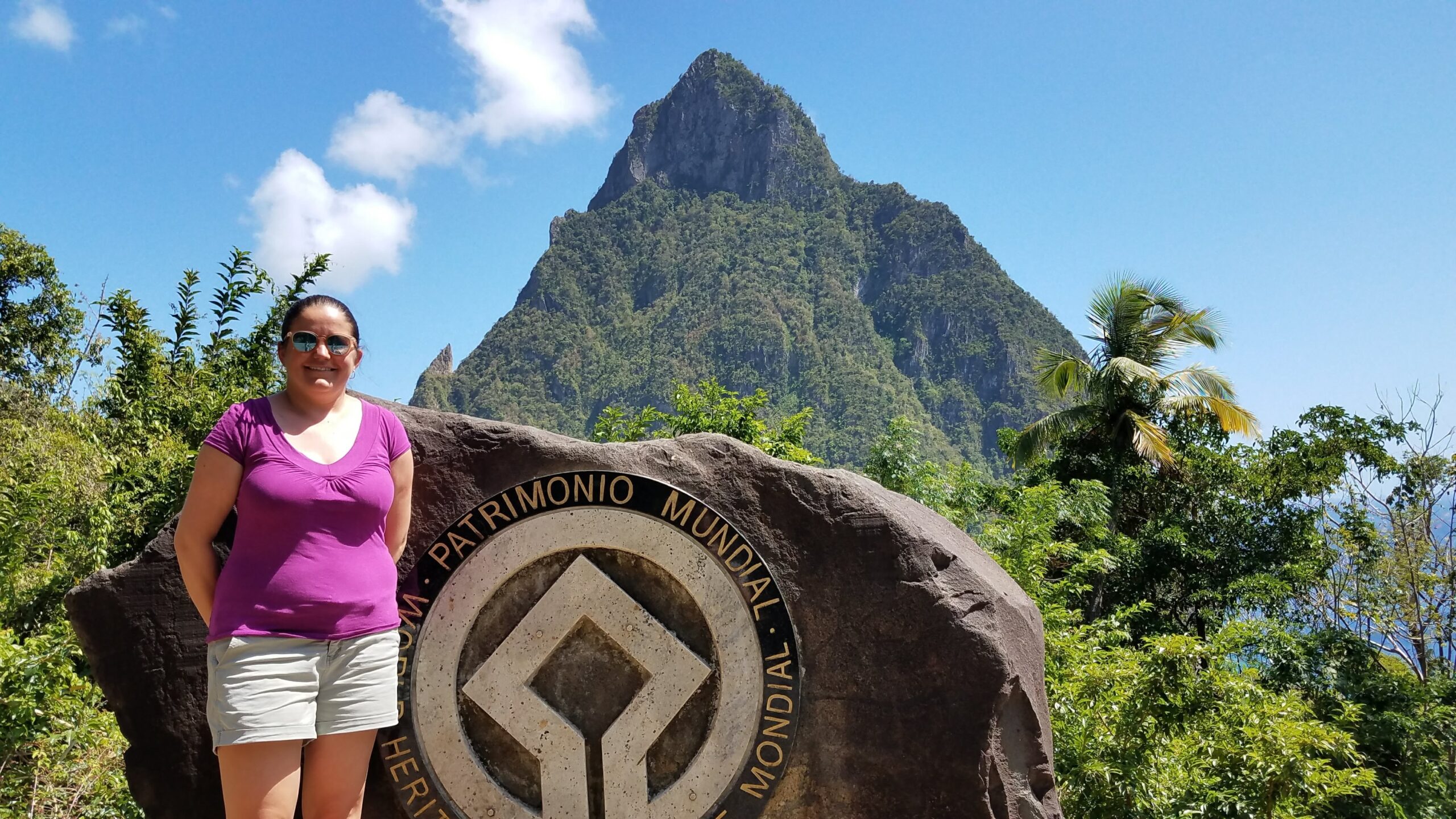Mount Robson, located in the Canadian Rockies of British Columbia, is a towering testament to the beauty and grandeur of nature. Staring up at the mountain while throwing rocks into the Robson River got me wondering about how this peak compares to the grandest around the world. Standing at an impressive 3,954 meters (12,972 feet), it is the highest peak in the Canadian Rockies and a popular destination for hikers, climbers, and nature enthusiasts. We visited in mid-2024 and stayed at the Mount Robson campground during our coast-to-coast pan-American road-trip. This post explores the fascinating statistics of Mount Robson and compares it to other notable mountains in North America, Europe, and the Andes.
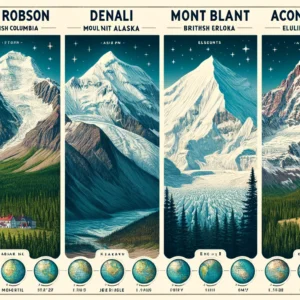
Overview and Statistics
Mount Robson is part of the Rainbow Range, a sub-range of the Canadian Rockies. Known for its stunning scenery and challenging climbing routes, Mount Robson attracts adventurers from around the world. Here are some key statistics:
- Elevation: 3,954 meters (12,972 feet)
- Prominence: 2,829 meters (9,281 feet)
- Location: Mount Robson Provincial Park, British Columbia, Canada
- First Ascent: 1913 by Conrad Kain, William Foster, and Albert MacCarthy
- Coordinates: 53.1106° N, 119.1542° W
Mount Robson’s dramatic rise from the surrounding terrain makes it a visually stunning and imposing presence. The Berg Lake Trail, one of the most popular hiking routes in the region, offers breathtaking views of the mountain and its glaciers.
Comparisons with Other Mountains
North America
- Denali (Mount McKinley), Alaska, USA
- Elevation: 6,190 meters (20,310 feet)
- Prominence: 6,144 meters (20,151 feet)
- Denali is the highest peak in North America and is renowned for its extreme weather conditions and challenging climbing routes. While Denali is significantly taller than Mount Robson, both mountains offer unique climbing experiences and are cherished by mountaineers.
- Mount Rainier, Washington, USA
- Elevation: 4,392 meters (14,411 feet)
- Prominence: 4,027 meters (13,211 feet)
- Mount Rainier, an active stratovolcano, is another iconic peak in North America. It is known for its massive glaciers and serves as a training ground for climbers preparing for expeditions to higher peaks like Denali.
Europe
- Mont Blanc, France/Italy
- Elevation: 4,808 meters (15,774 feet)
- Prominence: 4,695 meters (15,406 feet)
- Mont Blanc, the highest peak in the Alps and Western Europe, is a major destination for climbers and skiers. While it surpasses Mount Robson in height, the climbing culture and history associated with both peaks are equally rich and storied.
- Matterhorn, Switzerland/Italy
- Elevation: 4,478 meters (14,692 feet)
- Prominence: 1,042 meters (3,419 feet)
- The Matterhorn is one of the most recognizable mountains in the world due to its iconic pyramid shape. Its technical climbing routes and picturesque location make it a favorite among alpinists, much like Mount Robson is in the Canadian Rockies.
Andes
- Aconcagua, Argentina
- Elevation: 6,959 meters (22,831 feet)
- Prominence: 6,962 meters (22,841 feet)
- Aconcagua is the highest peak in both the Western Hemisphere and the Southern Hemisphere. Its towering height and relatively non-technical routes attract climbers from all over the globe. In comparison, Mount Robson offers a different kind of challenge with its steep rock faces and glaciers.
- Huayna Potosi, Bolivia
- Elevation: 6,088 meters (19,974 feet)
- Prominence: 1,358 meters (4,455 feet)
- Known for being one of the most accessible 6,000-meter peaks, Huayna Potosi provides a good training ground for high-altitude climbing. Mount Robson, though not as high, offers a similarly rewarding climbing experience with its technical difficulty and stunning scenery.
Climbing and Hiking Experiences
Mount Robson presents a formidable challenge to climbers due to its steep and rugged terrain. The mountain is often shrouded in clouds, adding to its mystique and making clear summit days rare. Climbers must navigate glaciers, rock faces, and unpredictable weather conditions. The Berg Lake Trail, a multi-day hike, allows non-climbers to experience the awe-inspiring beauty of Mount Robson up close. The trail winds through diverse landscapes, from lush forests to alpine meadows, culminating at the breathtaking Berg Lake, where the massive Robson Glacier descends into the water.
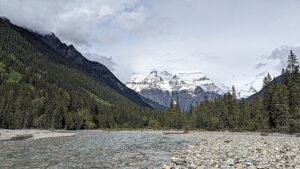

Wildlife and Conservation
Mount Robson Provincial Park is home to a rich array of wildlife, including grizzly bears, black bears, moose, elk, and mountain goats. The park’s diverse ecosystems provide vital habitats for these species. Conservation efforts are crucial to preserving the natural beauty and ecological integrity of the area. Visitors are encouraged to practice Leave No Trace principles to minimize their impact on the environment.
Camping at Robson River Campground & the Berg Lake Trailhead
During our Pan-American road trip in June 2024, on our way from Jasper National Park to Whistler, we stayed at Robson River Campground, nestled in the heart of Mount Robson Provincial Park. It was a tight squeeze, but we managed to park our F-150 towing a 24′ travel trailer into one of the sites. Once set up, we found the location to be fantastic—shaded by towering trees and within earshot of the rushing Robson River. The campground offers potable water, picnic tables, fire pits, and basic restroom facilities, making it a convenient and scenic base for exploring the area.
One of the biggest advantages of staying at Robson River Campground is its proximity to the Berg Lake Trailhead. This meant we could get an early start on one of the most breathtaking hikes in the Canadian Rockies. The Berg Lake Trail winds through lush valleys, past cascading waterfalls, and alongside glaciers before reaching the stunning Berg Lake, where massive ice chunks break off from the Robson Glacier. After a long day of hiking, returning to camp and relaxing among the trees was the perfect way to end the day.
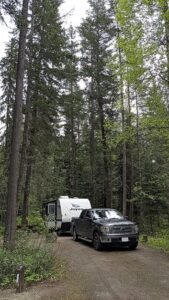
Mount Robson stands as a majestic and challenging peak in the heart of the Canadian Rockies. Its impressive elevation, stunning scenery, and rich climbing history make it a destination of choice for adventurers and nature lovers. When compared to other notable mountains in North America, Europe, and the Andes, Mount Robson holds its own, offering unique experiences and challenges. Whether you’re a seasoned climber or a hiking enthusiast, Mount Robson promises an unforgettable journey through some of the most beautiful landscapes on Earth.

